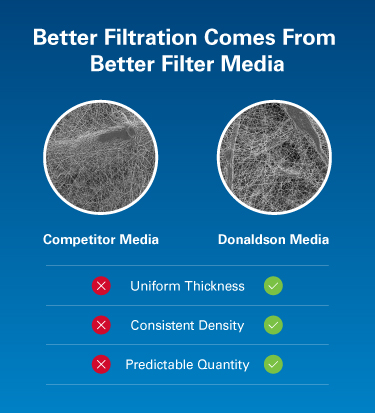
Hungary’s automotive industry is one of the country’s most profitable sectors and generates almost 20 per cent of its exports. Last year, Hungary exported 8.2 billion euros worth of vehicles and 5.3 billion euros in engines and components. Hungary exports nearly 94 per cent of its car production, and 88 per cent of its engine and component production. The sector comprises over 630 companies employing over 110,000 people.
Many multinational automakers have a base in Hungary. Japanese tyre-maker Bridgestone has invested nearly 200 million euros in a facility that uses its latest BIRD production system. The unit has capacity to churn out 8,000 tyres daily and employs 185 employees. Similarly, Hankook Tire of Korea is investing 528 million euros by 2010 in a new facility that will produce 10 million tyres annually. The list goes on.
“Many multinational companies have located their manufacturing, service operations, European headquarters and R&D centres in Hungary, which has translated to nearly 54 billion euros of foreign direct investment to date. Audi, Suzuki, GM, Asahi Glass, Bosch, Bridgestone, Delphi Calsonic, Denso, Ibiden, Knorr-Bremse, Lear, Michelin, Visteon and Hankook Tire are among the international players that have already invested in Hungary. Manufacturers such as Suzuki and Audi are continuously expanding their capacity and workforce to meet growing demand. This is one of the reasons why 14 of the world’s top 20 Tier 1 suppliers have already established operations in Hungary,” Gyorgy Retfalvi, General Director of the Hungarian Investment and Trade Development Agency (ITDH), told AI in an earlier interview.
In addition to its convenient location in the heart of Europe, Hungary has the added advantage of an excellent network of technical colleges and universities producing thousands of highly trained engineers every year. In addition, the Hungarian workforce is considerably less expensive than those in other parts of Europe.
Automotive Industries caught up again with Gyorgy Retfalvi, General Director of the Hungarian Investment and Trade Development Agency (ITDH).
AI: What are some of the biggest changes in Hungary’s automotive industry over the past couple of years?
Retfalvi: The automotive industry is one of the economic sectors that has benefited most from heavy foreign direct investment inflows post 1990. A quarter of total FDI in manufacturing is invested in the automotive industry. Like the manufacturing sector as a whole, the automotive industry is FDI driven and mainly pulled by the foreign companies that have invested in Hungary since the 1990s. Simultaneously, small and medium-sized local automotive companies have become stable and strategic partners of locally based and Western European car manufacturers. Owing to the rapid introduction of modern corporate management and quality assurance systems, productivity in Hungary has now reached the Western European average.
Thanks to the growing number of foreign companies that have set up shop in Hungary since the 90’s, an efficient and effective business environment has been created. Since the mid-1990s, Hungary has one of the highest growth rates in Central Europe, exceeding the pace at which the EU has been expanding. The most important incentive for foreign investors is the highly favourable Hungarian tax regime. The current rate of corporation tax is 16 per cent, one of the lowest in Europe. Tax incentives in accordance with EU regulations on government subsidies are available on a per case basis through a permit issued by the Ministry of Finance. For instance, corporate income tax may be reduced by up to 80 per cent.
AI: How has Hungary’s auto sector prepared itself to meet the new recessionary trends in the market?
Retfalvi: The effects of the economic crisis in Europe have primarily been seen in a dramatic slump in passenger car manufacture and sales. European car manufacturers – among them Eastern European plants – have employed general methods of cutting output, including reducing the working day from three to two shifts, prolonged halts in production, scaling down working hours and laying off workers. Programmes to protect employment and production capacity in the automotive industry are at the top of the agenda in Europe as they are in the United States.
In the short term, the Hungarian government plans to ease the problems of the industry by promoting flexible employment, protecting jobs and capacity in research and development and by tailoring the application process for government support to individual companies. Further ahead, it will maintain and develop levels of training to meet the needs of the automotive industry and improve the effectiveness of the investment promotion system, as well as reducing employee contributions.
Despite the crisis, Hungary continues to play a key role in car production in Central and Eastern Europe. The Automotive 2009 CEE congress held in Budapest in February is a strong indication of the country’s importance to the automotive industry.
Despite the slump in the car market, Daimler has confirmed its plans to invest in Hungary. Excellent geographical location, developed infrastructure, highly trained employees and an extensive network of automotive suppliers are qualitative factors that remain unaffected by the current financial crisis.
ITD Hungary continues to be in discussion with several large and medium sized investors and we are yet to experience a fall in interest in Hungary.
AI: Is Hungary losing out to low-cost countries in Asia and Central and Southern America?
Retfalvi: It is impossible to say specifically that Hungary is losing ground against low-cost zones. It is Europe as a whole where the battle is currently being fought. When automakers consider future production, they realise that our region is equally competitive from a logistics, supplier base and quality standpoint. And when it comes to Western European wages, Central and Eastern Europe is still favourable: Labor costs remain at just 25-35%. Of course, it would be wrong to neglect Asia, and Hungary has always had good commercial and diplomatic relations with Asia and is continuing to deepen these affiliations.
AI: What are some of the benefits for an auto firm in today’s market of having a manufacturing base in Hungary?
Retfalvi: Whether you are a producer looking for a cost-effective manufacturing base, competitive component and part suppliers, or locations for logistics and R&D centres, Hungary has plenty to offer. Hungary is at the heart of Central Europe, a region characterised by dynamic economic growth driven by high industrial output, excellent export potential and growing domestic demand. The country lies along the Eastern border of the EU and is within the Schengen zone. Its strategic position, highly developed logistics and utilities infrastructure and traditional role as a trading post makes it increasingly important as a regional distribution centre and a natural service hub for the CEE region. Four trans-European motorways run through Hungary, more than in any of the neighbouring countries and most countries in the Balkans can only be reached through Hungary. As a member of the European Union, Hungary has fully harmonised its legal system, adopting European safety and quality regulations related to automotive manufacturing. Hungary also compares very favourably when it comes to data security and enforcement of intellectual property rights. Companies can expect 30 to 50 per cent cost savings compared to Western Europe and the US. The Hungarian labour force also rates highly in international comparisons for innovation and creativity, due to the country’s renowned standards of schooling and tertiary education. Fourteen of the world’s top 20 Tier 1 suppliers, including Robert Bosch, ThyssenKrupp, Denso, Michelin, Valeo, Bridgestone, Magna Steyr, BorgWarner, Visteon, Delphi, Continental, Lear, Siemens and Sumitomo are already present in Hungary. They have also surrounded themselves with clusters of home-grown small and medium-sized manufacturers and service providers. Renault-Nissan, General Motors, Porsche and DAF/PACCAR have chosen Hungary as a location for part centres supplying not only the Central and Eastern European markets but also Ukraine, Russia and the Balkans. Hungary has a globally recognised academic and university infrastructure. Increasingly, automotive-related R&D activity is carried out in top universities and research institutions, while leading global manufacturers, including Audi, Bosch, Knorr-Bremse, Magna-Steyr and ThyssenKrupp, have established R&D centres in Hungary. Hungary is the regional leader in the production of petrol engines and the fourth largest exporter in Europe.
AI: What are some of the promotional events and programs ITDH is planning to attract further FDI into Hungary’s auto sector?
Retfalvi: We are continuously evaluating possibilities of meeting worldwide decision-makers. Our consultants are attending the following upcoming events: the EquipAuto-Paris, France and 11th International Automobil Forum in Graz in October; the International Automotive Electronics Congress in Paris and the Auto CEE in Prague in November; and the AMS India conference in December.














More Stories
New generation of Donaldson compressed air dryer systems offers enhanced reliability and energy efficiency
Flexible Magna Manufacturing Solutions: The Key to Success in the Automotive Industry
Celanese helping OEMs and Tiers to overcome EV challenges